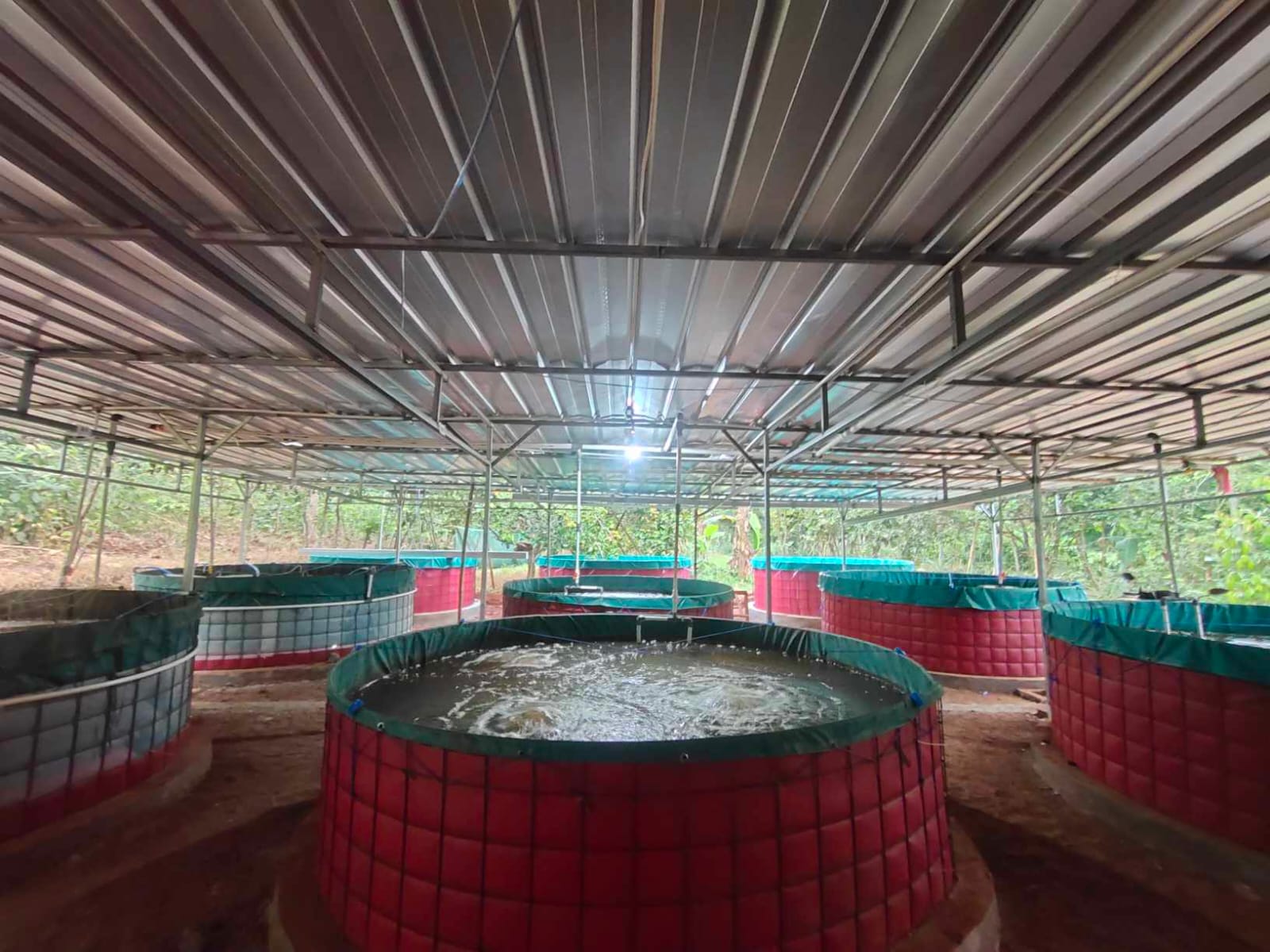Shrimp is one of the most popular seafood throughout the world. There are thousands of species of shrimp spread across various waters of the world. In this article, we will explain some interesting facts about shrimp, from their ecological role in the ecosystem to the health benefits we can gain from consuming them.
Here are interesting facts about shrimp that most people rarely know:
1. Diversity of shrimp species
Did you know that there are more than 2,000 species of shrimp spread throughout the ocean? All types of shrimp can be found from tropical areas to the Antarctic Ocean. In Indonesia itself, shrimp typesgiant prawns, tiger prawns, or those classified based on their habitat such as saltwater and freshwater shrimp are the most popular species.
Shrimp species diversity is a biological phenomenon that reflects the number of different shrimp species that can be found in various water areas of the world. In a scientific context, species diversity is defined as the variety or number of diverse species in a particular group of organisms.
The diversity of shrimp species is part of the rich marine biodiversity. Biodiversity refers to the biological diversity of organisms that live in an environment. In the marine environment, there are many factors that contribute to the diversity of shrimp species, including differences in environmental conditions such as water temperature, sea depth, and salinity. These factors create a variety of different habitats around the world, which can be inhabited by shrimp species adapted to these conditions.
Shrimp can be found in various water areas throughout the world, from tropical waters to polar waters in Antarctica. The geographic distribution of this shrimp species can be explained by a number of factors, including water temperature, nutrition, and food availability. Some shrimp species have particular preferences for certain environmental conditions, while others are more tolerant of environmental variations.
Each species of shrimp has developed its own unique adaptations to survive and thrive in its particular environment. For example, shrimp living in tropical waters may have the ability to tolerate high water temperatures, while shrimp living in colder waters may have adaptive mechanisms to cope with lower temperatures. These things are the cause of the spread of thousands of types and species of shrimp throughout the world.
2. The role of shrimp in the ecosystem
One of the interesting things about shrimp life is their role in maintaining ecosystem balance. Shrimp are the main food for animals at the top of the food chain such as sharks, dolphins, whales, sea birds, and also other fish that are bigger than them. Apart from that, there is a symbiotic relationship between fish and shrimp which functions as a parasite cleaner.
This is because shrimp are at a different trophic level in the marine ecosystem food chain. They usually function as low-level consumers consuming phytoplankton, zooplankton, and organic detritus in the marine environment. This makes them an important part of the basic food chain that supports life in the sea.
Shrimp also have an ecological role as parasite cleaners. Some types of shrimp live in symbiotic relationships with fish and other marine organisms. They cleanse the bodies of these fish and other organisms of parasites by undergoing cleaning behaviors. This is not only beneficial for the fish and other organisms, but it is also beneficial for the shrimp allowing them to obtain additional food.
3. Shrimp swimming ability
Not having fins does not mean it prevents shrimp from swimming. Although shrimp do not have fins like fish, they have a body structure and locomotion mechanisms that allow them to swim well. The cooperation between the abdominal muscles, small legs, and tail makes shrimp an arthropod that is very good at swimming. If you pay attention to shrimp, you will see that they have a commendable swimming speed, even when they are walking.
The shrimp's body consists of various parts that play a role in swimming ability. One important part is the tail, which has a strong tail fin that can be used to propel the shrimp forward in the water. This tail fin functions similarly to fish fins in general.
Apart from their tails, shrimp also use their small legs to help them swim. These legs function as a tool and also function to regulate swimming direction. Shrimp also have eggs that help in directing movement and maintaining balance while swimming.
Shape the tail and legs of the shrimp
4. Unique communication
Shrimp have a lobster-like body structure equipped with large claws. The difference is that shrimp only have medium-sized claws. However, did you know that these claws are a tool for communicating with other shrimp?
Shrimp use their claw movements as a means of communication. They can move their claws in a variety of ways, including lifting, extending, or waving the claws. This movement can serve as a signal to other shrimp in their group.
Claw movements are used for various communication purposes. One of its goals is to show dominance or aggression towards other shrimp. Shrimp that move their claws aggressively may be trying to claim a particular territory or food source. On the other hand, quieter claw movements can be used as a sign of tolerance or peace between shrimps.
In addition to physical movements, claw movements can also produce sounds. Shrimp can produce sounds that come from the rubbing of their claws, and these sounds can have various meanings depending on the context.
5. Shrimp are nocturnal animals
Because they are nocturnal, shrimp actively search for food at night. During the day, they rest in the mud or stick to the bottom of the pond (burrowing). If vaname shrimp are seen actively moving during the day, this is an indicator of disturbances in water quality.
This is because some shrimp species have a diet based on microscopic organisms such as phytoplankton and zooplankton. These tiny organisms often move to the surface of the water at night in search of abundant food, and the shrimp follow them. This habit of eating at night allows shrimp to obtain the food necessary for their growth and survival.
Additionally, in some waters, the water temperature can be very high during the day and more comfortable at night. Nocturnal activity can allow shrimp to avoid extreme temperatures and maintain their body temperature within an optimal range.
Therefore, shrimp activity during the day, especially if it is unpredictable, could indicate a disturbance in water quality, such as high levels of pollution or oxygen depletion.
6. The ability of shrimp to tolerate different temperatures and salinity
Several species of shrimp are categorized aseurythermal, which means they have a tolerance for wide temperature variations in waters. This ability results from physiological and behavioral adaptations. Shrimpeurythermal able to function in water temperatures that range from very cold to very hot.
Water temperature itself is closely related to water salinity. High temperatures will tend to increase water salinity. Some species of shrimp can live in a wide range of salinities, and this is usually related to their ability to move between different habitats in an aquatic system.
Shrimp have various adaptation mechanisms to survive different temperatures and salinities. One of these mechanisms is osmoregulation, which regulates fluid concentration which allows them to control the salt concentration in their body according to changes in environmental salinity. Additionally, they can also regulate their metabolic rate to cope with changing water temperatures.
7. Shrimp are omnivores and cannibals
Before you eat shrimp at a seafood restaurant, shrimp consume various other types of organisms. Usually, shrimp eat by filtering the surrounding water or digging into the sea substrate to look for microscopic food in the form of plants and animals such as phytoplankton and zooplankton. Certain types of shrimp will also catch and eat small fish to supplement their nutrition.
Apart from eating plankton, some species of shrimp are also scavengers, which means they eat the remains of dead organisms or organic particles on the seabed. This includes marine insects, detritus, and other small organisms that rot on the sea floor.
Some shrimp species can also be small predators. They can prey on organisms smaller than themselves, such as fish larvae or even fellow shrimp. Cannibalism in shrimp often occurs during the molting process. When molting occurs, shrimp are very susceptible to disease attacks and vulnerable to the threat of cannibalism from other shrimp.
8. Health benefits of eating shrimp
The health benefits of consuming shrimp can be explained from the perspective of nutrition and the compounds contained in shrimp. The good news is that shrimp is a delicious but low-calorie seafood. You don't need to worry about significant weight gain even if you frequently consume shrimp. Because shrimp are high in protein and low in calories, it is not surprising that many people on a diet include shrimp in their diet menu.
Apart from that, shrimp contains various important minerals such as selenium, phosphorus and iodine. Selenium in particular, selenium is an antioxidant mineral that helps protect body cells from damage caused by free radicals. Shrimp also contain omega-3 fatty acids, especially in the form of eicosapentaenoic acid (EPA) and docosahexaenoic acid (DHA) as well as several vitamins such as vitamin B12, vitamin E, and vitamin A. Omega-3 itself has been proven to have various health benefits, including supporting heart health, good brain function, and reduced inflammation.
The process of harvesting shrimp for food needs
9. Benefits of cancer prevention from eating shrimp
Eating shrimp not only satisfies your taste buds, but also has additional health benefits. Shrimp contain selenium, an antioxidant mineral that fights the growth of cancer-causing radicals by activating enzymes in your body. Selenium helps protect body cells from damage caused by free radicals, which can cause genetic damage and the development of cancer cells.
If you make shrimp a part of your regular diet, you will indirectly reduce the risk of developing cancer. However, it is also important to balance shrimp consumption with other factors in a healthy lifestyle, such as exercising regularly and avoiding other risk factors.


























